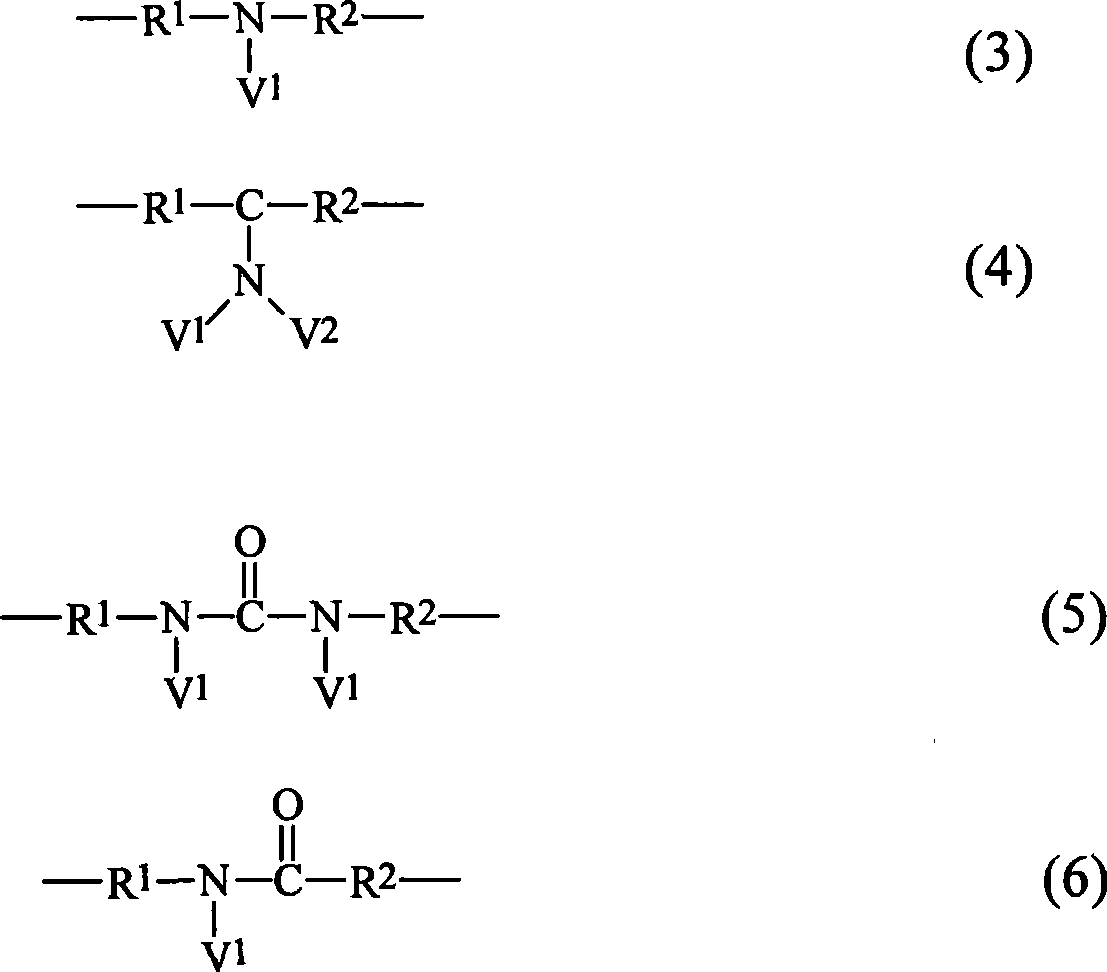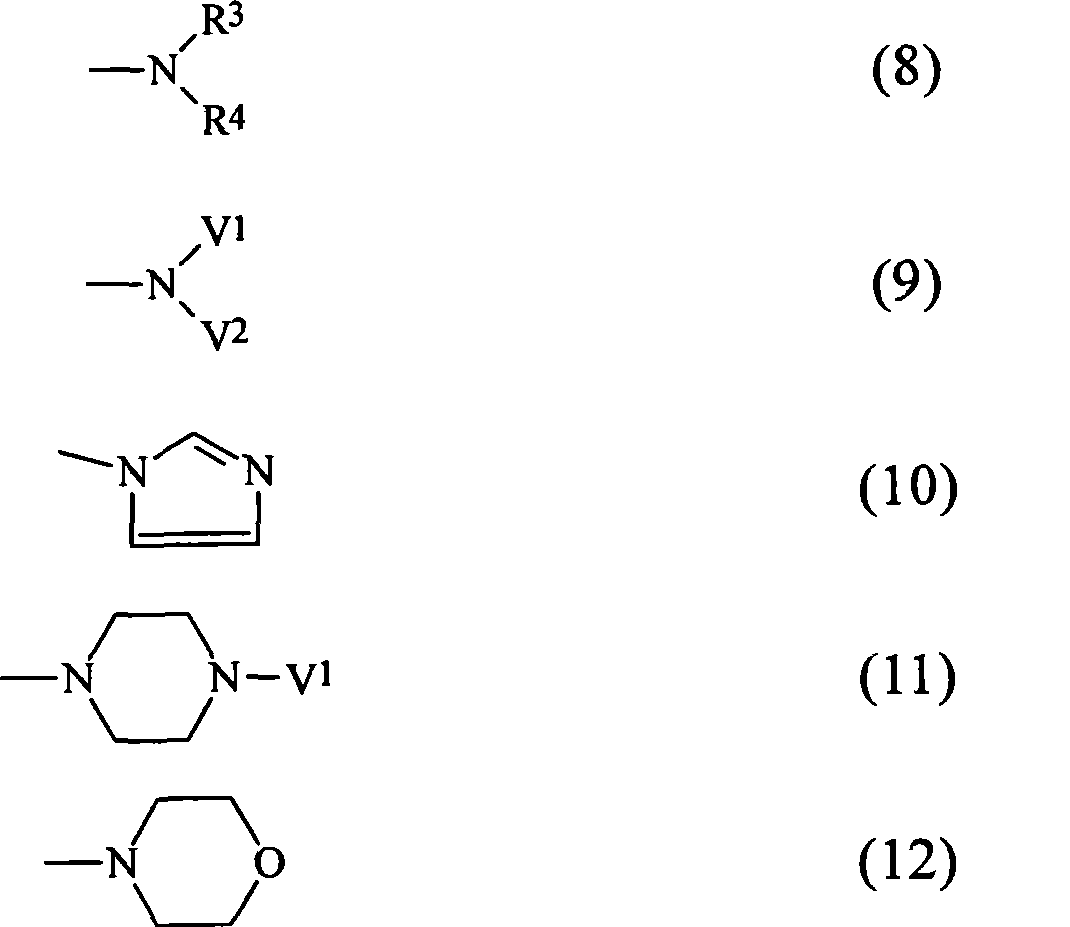Amine catalysts suitable for producing flexible polyurethane foams having low emissions and being recatalysis stable
A technology of polyurethane foam and flexible polyurethane, which is applied in the field of amine catalysts for preparing low-emission, re-catalyzed and stable flexible polyurethane foam, can solve the problem of polyurethane foam damage and the inability of flexible polyurethane foam to have flammability And other issues
- Summary
- Abstract
- Description
- Claims
- Application Information
AI Technical Summary
Problems solved by technology
Method used
Image
Examples
preparation example Construction
[0147] Preparation of flexible polyurethane foam
[0148] 300 g of polyol were used for foaming; the other components of the formulation were scaled accordingly. Here, for example, 1.0 part of a certain component means 1 g of this substance per 100 g of polyol.
[0149] For foaming, the polyol, water, catalyst combination (=amine catalyst and organotin compound according to the invention) and silicone stabilizer are thoroughly mixed by stirring. After adding the isocyanate, the mixture was stirred with a stirrer at 3000 rpm for 7 seconds and poured into a paper-lined wooden box (bottom area 27 cm x 27 cm). Foams were thus produced which were subjected to the use tests described below.
[0150] use test
[0151] Physical Properties of Flexible Polyurethane Foam
[0152] The prepared flexible polyurethane foam was evaluated according to the following physical properties:
[0153] a) Settling of the bubble after the end of the rise phase
[0154] b) Foam density (FD)
[01...
Embodiment 1
[0186]
[0187] *1 = CP 3322, available from Dow Chemical; this is a polyether triol with an OH number of 47.
[0188] *2 = BF2370, available from Evonik Goldschmidt GmbH; this is a polysiloxane-polyoxyalkylene block copolymer used as a foam stabilizer in the preparation of slab and molded flexible polyurethane foams.
[0189] *3 = 29, available from Evonik Goldschmidt GmbH; this is the tin(II) salt of ethylhexanoic acid.
[0190] The table below shows the types of amines and the foaming results.
[0191]
[0192] * = back pressure in mm of water
[0193]
[0194] Diethylaminoethoxyethanolamine is better than An important advantage of DMEE is that it does not promote recatalysis.
Embodiment 2
[0196] Foaming Results - Scattered
[0197] In order to examine the effect of the amine catalysts diethylaminoethoxyethanol and dimethylaminoethoxyethanol on foam emission, a formulation comprising the catalyst combination of the invention together with a low emission polyol was selected.
[0198]
[0199] *4 =Arcol It is available from Bayer AG; this is a low emission polyether triol
[0200] *5 = EF, available from Evonik Goldschmidt GmbH; this is tin ricinoleate.
[0201] The emission behavior of the above-mentioned foams was investigated according to the Daimler-Chrysler test method BP VWT 709 VOC measurement (30 minutes at 90° C.).
[0202] and get the following result:
[0203]
PUM
| Property | Measurement | Unit |
|---|---|---|
| tensile strength | aaaaa | aaaaa |
Abstract
Description
Claims
Application Information
 Login to View More
Login to View More - R&D
- Intellectual Property
- Life Sciences
- Materials
- Tech Scout
- Unparalleled Data Quality
- Higher Quality Content
- 60% Fewer Hallucinations
Browse by: Latest US Patents, China's latest patents, Technical Efficacy Thesaurus, Application Domain, Technology Topic, Popular Technical Reports.
© 2025 PatSnap. All rights reserved.Legal|Privacy policy|Modern Slavery Act Transparency Statement|Sitemap|About US| Contact US: help@patsnap.com



